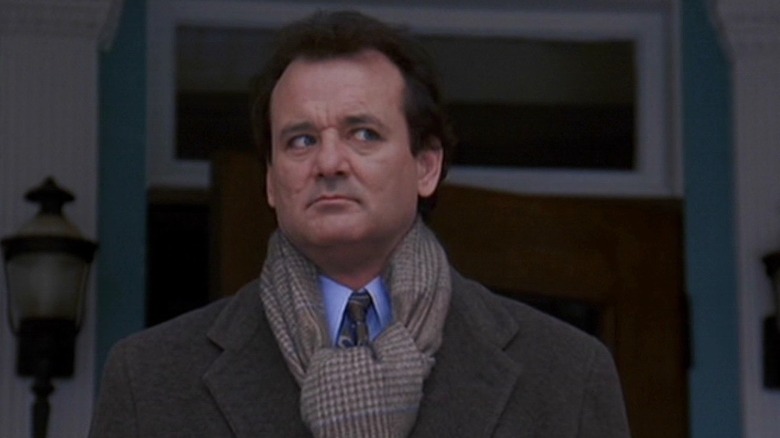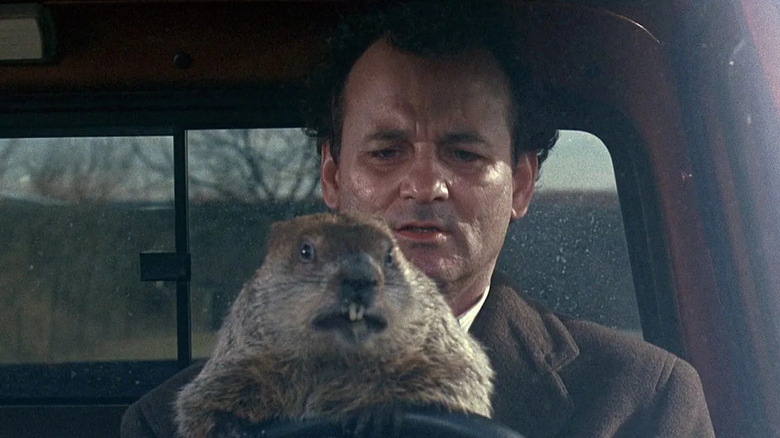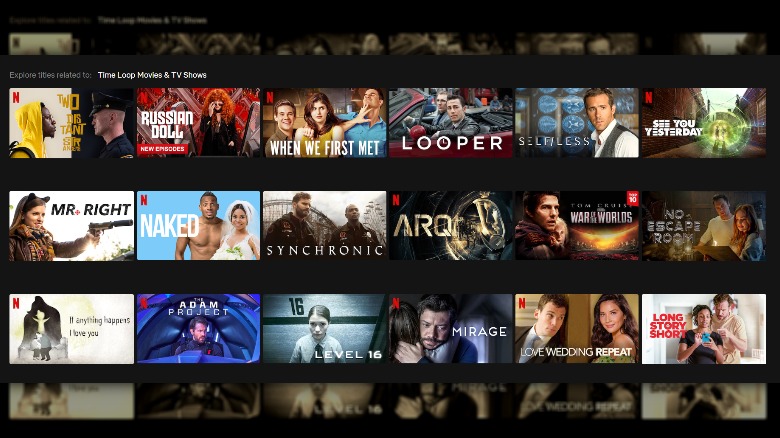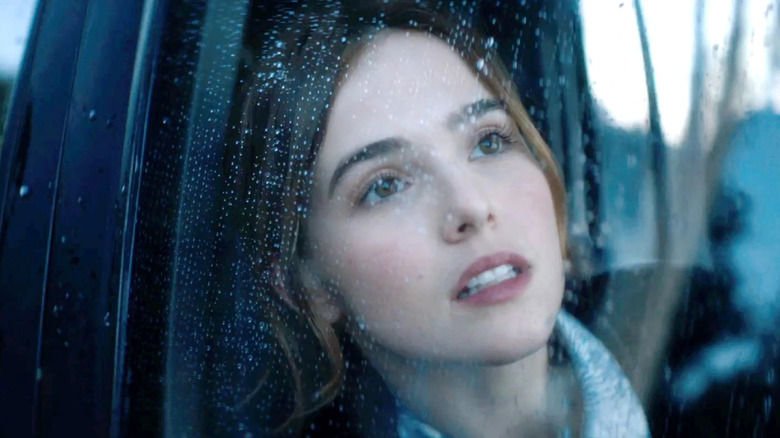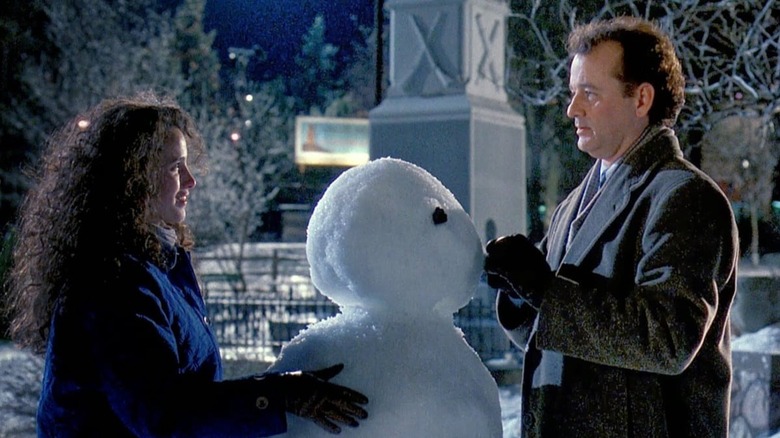There's A Good Reason Groundhog Day Is So Often Imitated
The story of "Groundhog Day" is dripping with irony. Although screenwriter Danny Rubin is not a household name, he should be. While director Harold Ramis gets much of the credit for the success of the 1993 movie, Rubin is solely responsible for the inventive original screenplay and only later refined it with Ramis. The film was so popular, the phrase "Groundhog Day" has become synonymous with days that feel like they might never end — or since COVID-19, perhaps years that feel like they'll never end.
Despite the film's acclaim, Rubin has just four screenwriting credits to his name, and that's where the irony comes into play. Hollywood took one of Rubin's most outlandish ideas — a time-repeating loop — and ran with it, only to consider his other ideas too eccentric. Even trapped in an infinite loop of his own made up of Hollywood contradictions, Rubin's most well-known concept is now imitated so often it could be considered its own subgenre.
'It's Groundhog Day and a train with a bomb'
Although Danny Rubin doesn't remember how the idea for "Groundhog Day" came to him, it's not surprising considering some of his early projects. According to Vulture, one of these jobs included writing a McDonald's corporate video script. Talk about mind-numbing. But Rubin always wanted to be a Hollywood screenwriter, so he wrote down 10 of his best ideas. Rubin explained that No. 10 on the list was "a man lives the same day over and over."
With Ramis directing and Bill Murray as the star, "Groundhog Day" grossed $71 million and became a staple of cable television each year on February 2. The film was innovative, quirky, quotable, and boasted a tremendous supporting cast that included Andie MacDowell, Chris Elliott, and Stephen Tobolowsky.
And then, "Groundhog Day" began to feel like Groundhog Day, becoming a familiar Hollywood trope. In an interview with The Ringer, Rubin explained how he started seeing similar time loop narratives appear in pop culture. First in television, including "The X-Files" and "Xena: Warrior Princess." And then the concept began to regularly make its way into films. Rubin said:
"'Groundhog Day' has emerged from being kind of an outlier that isn't really part of the system into something quite well-known and central to people when they think about movies. It might be safe to say, 'It's "Groundhog Day" and a train with a bomb.' Now people don't go, 'That's edgy. That's crazy.' They go, 'Oh, I see it. That's fun.'
Indeed, a quick glance at Netflix reveals a plethora of options involving Rubin's time loop concept.
Why it still works today
"Groundhog Day" left some existential details about the plot open-ended, such as why Phil ended up in the time loop and how long he was there. However, Danny Rubin believes these are some of the things that make the concept so successful today:
"There's something about having a repetitive life experience and being able to use what you learn in different ways that is a relatable human experience. Even though it feels like a fanciful, magical premise that doesn't really exist, our sequences of days do add up to us in that same way a lot of the time."
The concept only seems to be gaining momentum. Several recent films and series have used the infinite time loop plot device in a multitude of ways. Whether it's the sociopolitical anthology piece "Culture Shock" that questions the American Dream, a self-reflective "Before I Fall" about confronting our own actions, the creative indie "The Endless," which offers a double whammy of being trapped in a cult and a time loop, or a timely parallel with COVID-19 quarantines in "Palm Springs," the concept has exponential narrative applications. The time loop narrative is used so often it's considered standard time travel fare.
Unfortunately for Rubin, "Groundhog Day" and many of his other ideas were way ahead of their time, and while Rubin's concept continues to see success in Hollywood, the same can't be said about the screenwriter.
'They just wanted it to be more like something they already knew.'
It's a shame that the man that created an entirely new subgenre has such an abbreviated filmography. Even though "Groundhog Day" was wildly successful, Hollywood chose not to take a chance on some of Danny Rubin's other screenplay ideas. After the initial success of "Groundhog Day," Rubin reflected to Vulture: "It was like, 'Finally. This is where I belong.'" But it didn't happen.
With "Groundhog Day," Rubin proved at just age 32 to be a young, innovative screenwriter — perhaps too innovative for Hollywood. Rubin's daughter, Maida, told Vulture: "It seemed true of all his projects that they would take out the part he found interesting. They just wanted it to be more like something they already knew." But for some reason, the idea of Bill Murray waking up to the same day over and over did work for Hollywood producers.
Rubin's lack of success is head-scratching. You would think slapping "From the creator of 'Groundhog Day'" on a film would be like printing money. The hesitance reveals Hollywood's aversion to risk-taking. For such a beloved movie, "Groundhog Day" almost feels cursed. In addition to Rubin's singular success, the film almost destroyed Harold Ramis' and Murray's friendship, and Murray had a heck of a time on set.
For Rubin, real-life "Groundhog Day" arrived in 2012 when he was tabbed with rewriting the script, this time as a hit musical. Whether it's on stage, in a movie theater, on cable television, or through the many films borrowing from the concept today, Rubin's "Groundhog Day" concept remains relevant today, tomorrow, and the day after that, and ... well, you know the rest.
